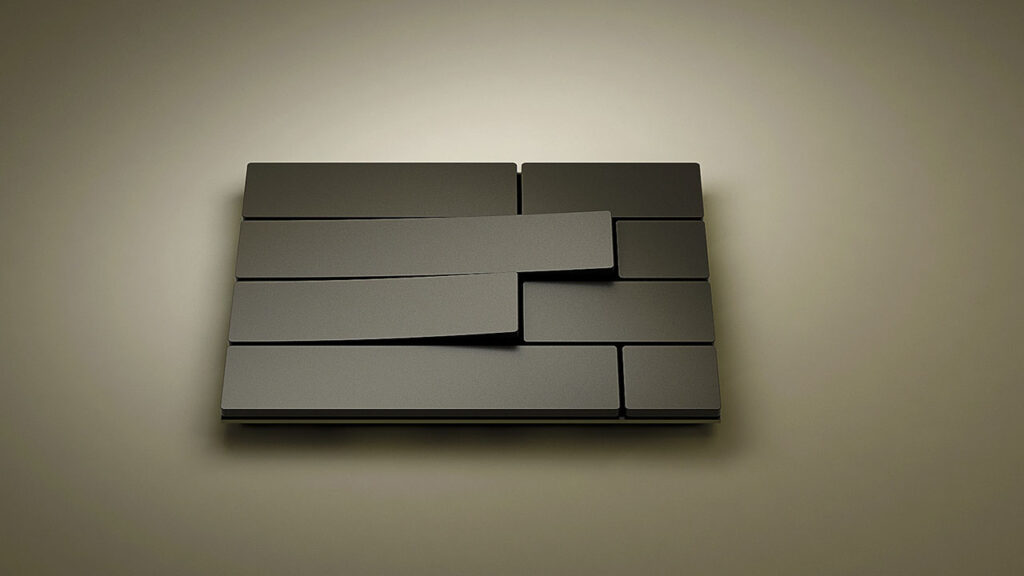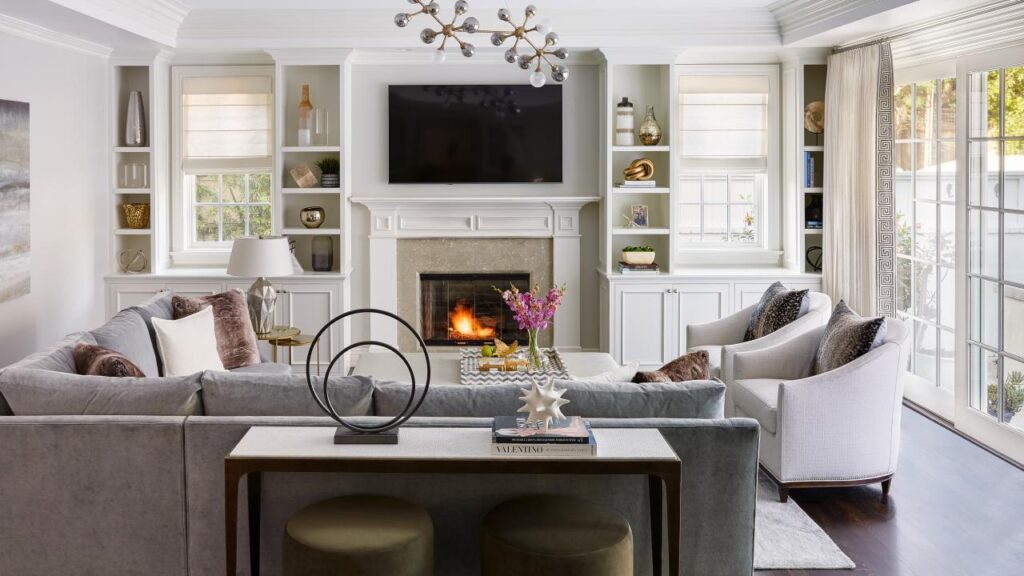Light switches may be one of the smallest elements in interior design, but they play a significant role in enhancing the aesthetics of a home. With their functional purpose, light switches are often overlooked when it comes to home decor. However, understanding the impact of light switch design on interior aesthetics can help create cohesive and visually appealing spaces.
Understanding the Role of Light Switches in Interior Design
At first glance, light switches may seem to have a purely functional purpose – turning lights on and off. However, they also serve as essential design elements that contribute to the overall style and ambiance of a room. The right outlet switch design can enhance the theme or style of a space, while a mismatched or outdated switch can detract from the overall aesthetic appeal.
When it comes to interior design, every detail matters. From the furniture to the color scheme, each element plays a role in creating a cohesive and visually pleasing environment. Light switches are no exception. They may be small in size, but their impact on the overall design should not be underestimated. Visit https://luxuryhomeswashington.com/the-importance-of-regular-circuit-breaker-maintenance for the importance of regular circuit breaker maintenance.
The Evolution of Light Switch Designs
Over the years, light switch designs have evolved significantly. From the simple toggle switches of the past to the sleek and minimalist designs of today, light switches have undergone a transformation to meet the changing needs and design preferences of homeowners. These advancements in design provide opportunities to incorporate switches seamlessly into the overall interior style.

In the past, light switches were often seen as purely functional objects, with little thought given to their appearance. However, as interior design became more important in creating inviting and aesthetically pleasing spaces, designers started to pay attention to even the smallest details, including light switches.
Today, there are a wide variety of light switch designs available on the market. From traditional toggle switches to touch-sensitive panels, homeowners have more options than ever before. These designs not only offer different aesthetics but also provide additional functionality. For example, some switches come with built-in dimmers, allowing for adjustable lighting levels to create the perfect ambiance.
The Connection between Light Switches and Room Ambiance
Light switches have a direct impact on the ambiance of a room. The level of brightness, the style of the switch, and its positioning all contribute to the overall mood and atmosphere. For example, dimmer switches allow for adjustable lighting, creating a cozy and intimate environment, while sleek and modern switches can complement a contemporary decor style.
When designing a room, it is important to consider the desired ambiance and how lighting can help achieve it. Light switches play a crucial role in this process. By choosing the right switch design and positioning it strategically, you can enhance the overall atmosphere of the space.
For instance, in a bedroom, a dimmer switch can be installed to create a relaxing and soothing environment, perfect for winding down at the end of the day. On the other hand, in a home office, a switch with a modern and sleek design can add a touch of sophistication to the space.
Light switches are not just functional objects; they are an opportunity to elevate the design of a room. By carefully selecting the right switch design and considering its impact on the overall ambiance, you can create a space that is not only visually appealing but also perfectly suited to your needs and preferences.
The Aesthetic Value of Different Light Switch Designs
When it comes to light switch design, there is a wide range of options available to suit various interior styles and personal preferences. The design of a light switch may seem like a small detail, but it can have a significant impact on the overall aesthetic appeal of a room. From traditional to modern designs, the choice of light switch can enhance the visual appeal and complement the interior style.
Traditional vs. Modern Light Switch Designs
Traditional light switch designs often feature ornate details and materials like brass or wood, making them suitable for classic or vintage-inspired interiors. These switches exude a sense of elegance and timelessness, adding a touch of sophistication to any room. The intricate designs and craftsmanship of traditional light switches can become a focal point, enhancing the overall aesthetic appeal of the space.
On the other hand, modern light switch designs are characterized by clean lines and minimalistic aesthetics. These switches are often made of sleek materials like stainless steel or glass, creating a seamless and contemporary look. The simplicity of modern light switches can blend effortlessly with minimalist or industrial interior styles, adding a touch of modernity to the space.
The Influence of Material and Color on Aesthetics
While the design of a light switch is essential, the choice of materials and colors can significantly impact the overall aesthetic appeal. The material of a light switch can determine its durability, texture, and visual impact. For instance, a switch with a metallic finish can add a touch of sophistication to a room, reflecting light and creating a sense of luxury. On the other hand, switches made of natural materials like wood can bring warmth and organic beauty to the space.
In addition to materials, the color of a light switch can also play a crucial role in the overall aesthetic. Switches in neutral tones like white or black can seamlessly blend with any interior style, creating a cohesive and timeless look. On the other hand, switches in vibrant colors can create a playful and energetic atmosphere, adding a pop of personality to the room. Matching the switch material and color with the room’s overall palette can create a harmonious and visually pleasing design.

Furthermore, some light switches come with additional features like dimmers or LED indicators. These features not only enhance the functionality of the switch but also add an extra layer of visual interest. Dimmers allow for customizable lighting levels, creating ambiance and mood. LED indicators can serve as a stylish and practical element, indicating the switch’s status and adding a modern touch to the design.
In conclusion, the design, material, and color of a light switch can significantly impact the overall aesthetic appeal of a room. Whether you prefer traditional or modern designs, the right light switch can enhance the visual appeal and complement the interior style. By carefully considering the design elements and matching them with the room’s overall palette, you can create a harmonious and visually pleasing design that adds a touch of elegance or modernity to your space.
The Psychological Impact of Light Switch Design
Light switch design goes beyond its visual impact and extends to the psychological effects it can have on individuals within a space. The design of light switches can evoke specific emotions or moods, creating a powerful influence on the overall atmosphere of a room.
When it comes to mood and perception, the choice of light switch design is crucial. Warm-toned switches, with their soft and inviting glow, have the ability to create a cozy and intimate ambiance. These switches can make a space feel more welcoming and comforting, perfect for relaxation or social gatherings.
On the other hand, cool-toned switches can promote a sense of calmness and tranquility. These switches emit a crisp and refreshing light, which can be particularly beneficial in areas where focus and concentration are required, such as home offices or study rooms. The cool-toned switches can help individuals feel more centered and focused, enhancing productivity and mental clarity.
By carefully selecting switches that align with the desired ambiance, homeowners can create spaces that positively impact the occupants’ mood and overall well-being. The psychological impact of light switch design should not be underestimated, as it has the potential to transform a room into a sanctuary of emotions.
The Role of Light Switch Design in Creating Comfortable Spaces
Comfort is a fundamental aspect of interior design, and light switch design plays a crucial role in achieving it. Switches that are intuitive to use and positioned conveniently contribute to the overall functionality and usability of a room.
Imagine entering a room and struggling to find the light switch in the dark. This frustrating experience can instantly disrupt the comfort and convenience of a space. However, with well-designed switches that are easily accessible and strategically placed, users can effortlessly control the lighting, enhancing the overall comfort within a room.
Furthermore, the tactile experience of using a light switch can also contribute to the comfort factor. Switches with smooth and responsive buttons provide a satisfying sensation when pressed, creating a sense of control and ease of use. This attention to detail in light switch design ensures that every interaction with the switch is a pleasurable and seamless experience.
Light switch design is not just about aesthetics; it is about creating spaces that are functional, comfortable, and emotionally engaging. By considering the psychological impact of light switch design, homeowners can transform their living spaces into havens that cater to their emotional well-being and enhance their overall quality of life.

Incorporating Light Switch Design into Your Home Decor
Integrating light switch design into the overall home decor requires careful consideration and attention to detail.
Matching Light Switch Design with Interior Style
When choosing light switches, it is essential to consider the existing interior style to create a cohesive look. Coordinating switch plates and coverings with the wall color or material can help them blend seamlessly into the overall design scheme. Alternatively, selecting switches that contrast or stand out can serve as eye-catching accents in the room.
Tips for Choosing the Right Light Switch Design
When selecting light switch designs, homeowners should keep in mind not only the aesthetics but also the functionality. It is crucial to choose switches that are easy to operate and suit the specific needs of the space. Additionally, considering the durability and quality of materials used in the switch design ensures that it will withstand everyday use and maintain its visual appeal over time.
Future Trends in Light Switch Design
The world of light switch design continues to evolve, with technological advancements and sustainability considerations shaping future trends.
Smart Light Switches and Home Aesthetics
Smart light switches are gaining popularity and allow homeowners to control their lighting remotely. These switches can be seamlessly integrated into home automation systems and contribute to both convenience and aesthetics. The ability to adjust lighting levels and colors through smart switches enables homeowners to further personalize their spaces.
The Impact of Sustainability on Light Switch Design Choices
As sustainability becomes an increasingly important consideration in home design, light switch manufacturers are focusing on eco-friendly materials and energy-efficient designs. Switches made from sustainable materials or equipped with sensors that automatically turn off lights when not in use contribute to both environmental consciousness and a visually pleasing home.
In conclusion, light switch design plays a significant role in creating visually appealing and harmonious interiors. By understanding the impact of switches on overall aesthetics, homeowners can make informed choices that enhance the ambiance, comfort, and functionality of their spaces. Whether through traditional or modern designs, the right light switches can elevate the style and mood of a room, making them an essential element in interior design.

